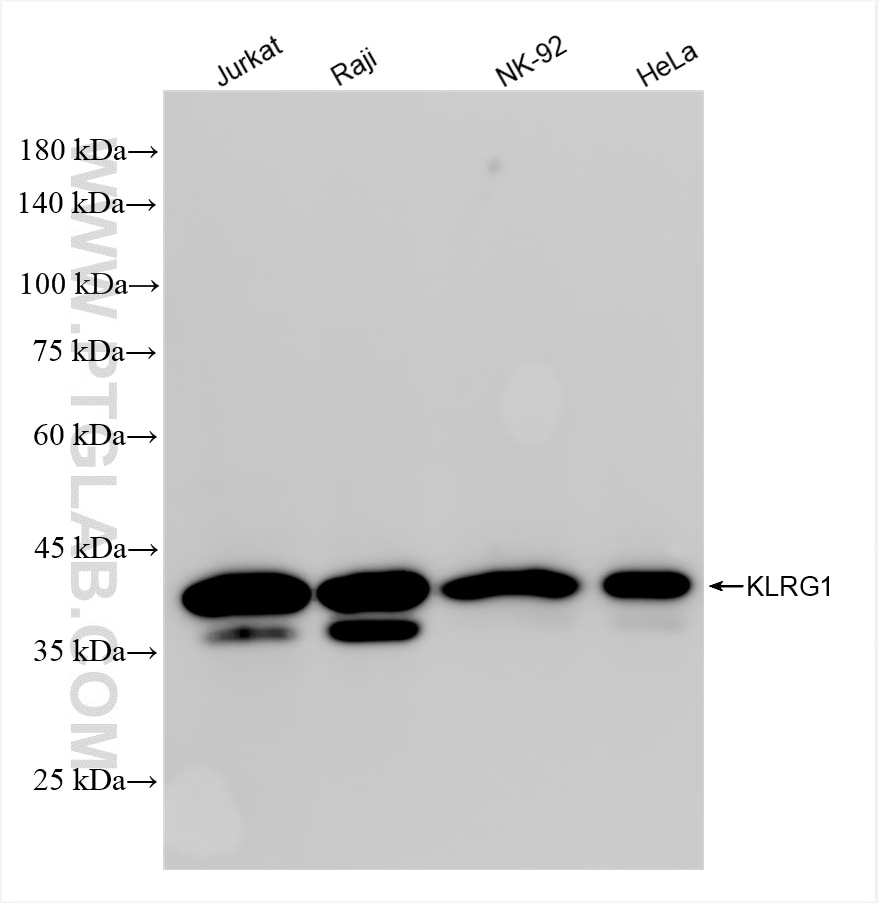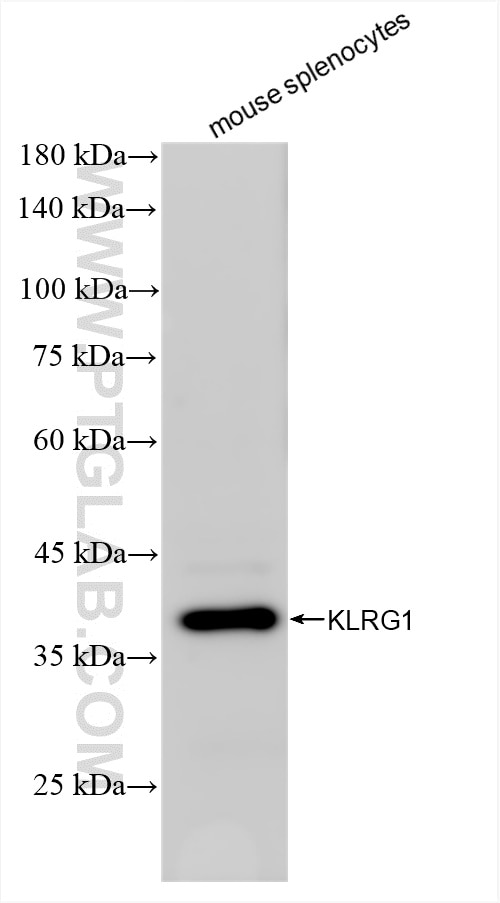Tested Applications
| Positive WB detected in | Jurkat cells, mouse splenocytes, Raji cells, NK-92 cells, HeLa cells |
Recommended dilution
| Application | Dilution |
|---|---|
| Western Blot (WB) | WB : 1:5000-1:50000 |
| It is recommended that this reagent should be titrated in each testing system to obtain optimal results. | |
| Sample-dependent, Check data in validation data gallery. | |
Product Information
84785-4-RR targets KLRG1 in WB, ELISA applications and shows reactivity with human, mouse samples.
| Tested Reactivity | human, mouse |
| Host / Isotype | Rabbit / IgG |
| Class | Recombinant |
| Type | Antibody |
| Immunogen | Recombinant protein Predict reactive species |
| Full Name | killer cell lectin-like receptor subfamily G, member 1 |
| Calculated Molecular Weight | 22 kDa |
| Observed Molecular Weight | 30-38 kDa |
| GenBank Accession Number | NM_005810.4 |
| Gene Symbol | KLRG1 |
| Gene ID (NCBI) | 10219 |
| Conjugate | Unconjugated |
| Form | Liquid |
| Purification Method | Protein A purfication |
| UNIPROT ID | Q96E93-1 |
| Storage Buffer | PBS with 0.02% sodium azide and 50% glycerol , pH 7.3 |
| Storage Conditions | Store at -20°C. Stable for one year after shipment. Aliquoting is unnecessary for -20oC storage. 20ul sizes contain 0.1% BSA. |
Background Information
KLRG1 (killer cell lectin-like receptor subfamily G, member 1) is a C-type lectin inhibitory receptor that contains an immunoreceptor tyrosine-based inhibitory motif (ITIM) in its cytoplasmic domain. KLRG1 is expressed by subsets of NK and T cells, existing both as a monomer and as a disulfide-linked homodimer (PMID: 10741410; 19604491). It is considered to be a cell differentiation marker for NK and T cells and is strongly induced by viral and other infections (PMID: 20373518). Through interactions with members of the cadherin family, KLRG1 plays an inhibitory role in NK- and T-cell function (PMID: 19009530; 20373518). Because of the glycosylation and disulfide bonds of the KLRG1 proteins, the observed molecular weights are typically 30-38 kDa (PMID: 17404256).
Protocols
| Product Specific Protocols | |
|---|---|
| WB protocol for KLRG1 antibody 84785-4-RR | Download protocol |
| Standard Protocols | |
|---|---|
| Click here to view our Standard Protocols |





